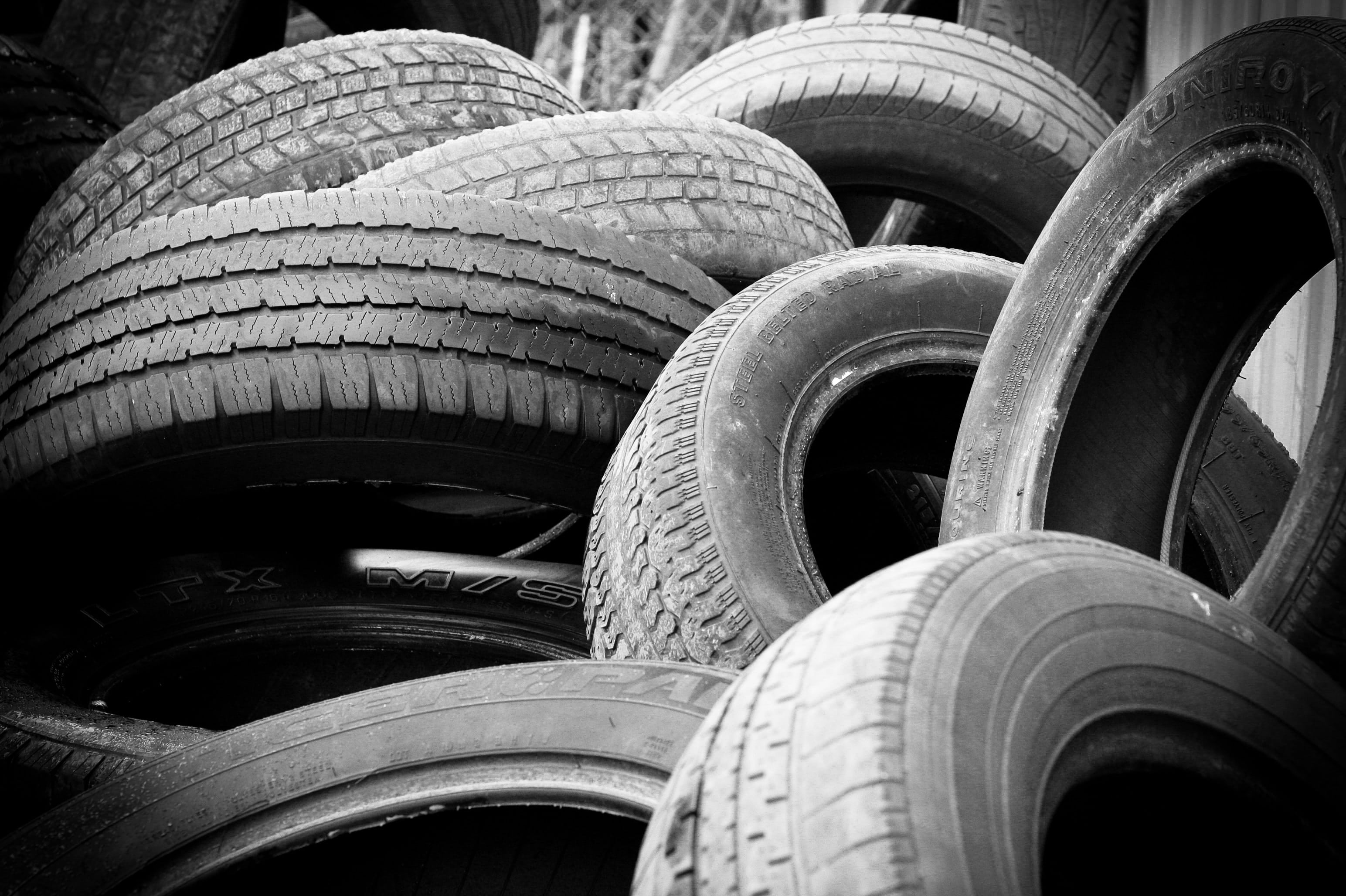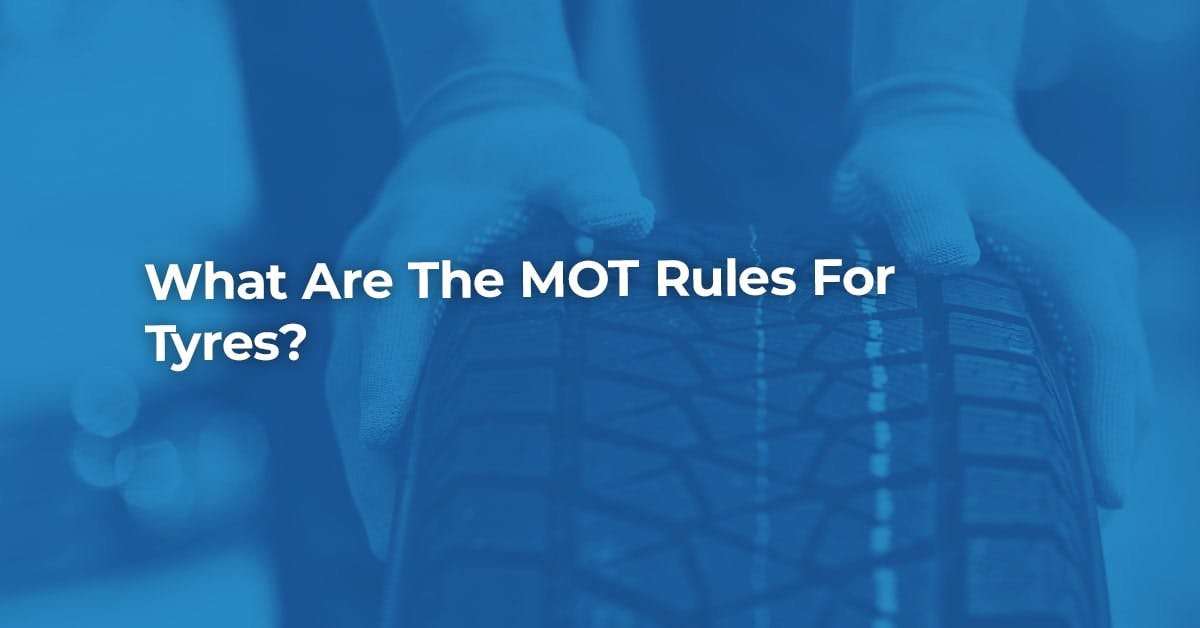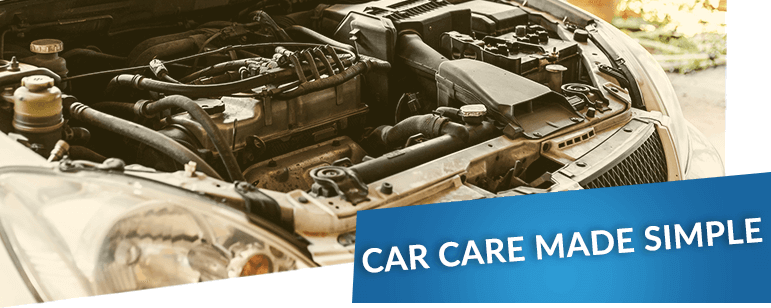Did you know that issues relating to tyres are a common reason for MOT failure?
By performing a few quick visual checks ahead of time and acting accordingly, you can ensure that your tyres will pass an MOT test.
Read on and find out some of the key MOT rules concerning tyre health that you should bear in mind ahead of your next MOT.
Page Contents
What are the Main MOT Rules For Tyres?
The main MOT rules for tyres are:
- Tread depth must be at least 1.6mm
- No Damage to tyre sidewall
- No exposed cords or plys
- Tyres on same axles must have matching structures
- Tyres must be properly inflated
- TPMS must work
- Tyres must be right size
- Tyres must have correct speed rating
Tread Depth Must Be at Least 1.6mm
A primary groove on a tyre must have a tread depth of 1.6mm, as a legal minimum.
Certain secondary grooves may be designed to be shallower - you can identify these if they do not have a tread wear indicator in them.
Anything below this legal tyre tread limit will result in MOT failure, and could land you a hefty fine and even points on your licence if you are stopped by the police.
When your tyres have the appropriate tread level, this will help with traction and allow your tyres to better grip the road surface, thereby reducing the risk of aquaplaning.
No Damage to Tyre Sidewall
Any lumps, tears or bulges in the tyre sidewall caused by separation could put the driver in danger, meaning that any serious damage to the tyre sidewall could result in MOT failure.
The tyre sidewall is designed to withstand pressure and keep your car stable, and any damage can put you at a higher risk of tyre blowout.
Small cuts which do not expose the carcass may not result in MOT failure, but any cuts or splits could still result in an MOT advisory.
Cords and Plys Must Not Be Exposed
Any significant damage to the tyre tread cap or tyre shoulders which exposes the cords or ply will result in MOT failure.
A tyre with exposed plys and cords should be replaced as soon as possible.

Tyres on the Same Axle Must Have Matching Structures
Tyres should have matching tyre structures - be it radial or crossply - if they are on the same axle. Ideally, you should have matching tyre structures on each wheel too.
Tyres which do not match on a single structure will result in MOT failure, as this can result in unpredictable handling and braking.
Whilst Run On Flat, load and speed tyres can technically be mixed in the UK, we would advise that you do not mix tyres.
Tyres Must Be Properly Inflated
If your tyres are under-inflated, this will cause your vehicle to fail the MOT test, as this can have an effect on how your vehicle handles and make for a dangerous driving experience.
Tyres lose pressure over time, which is why it is so important that you regularly check your tyres - not just ahead of an MOT test - and inflate them to the appropriate PSI recommended by the vehicle’s manufacturer when needed.
Whilst your tyres will not be physically checked during an MOT test, a tyre which is visibly under-inflated can cause MOT failure.
Whilst over-inflated tyres may not result in MOT failure, this can have other issues for your vehicle, so ensure that you always have your tyres properly inflated so that you can stay safe on the road.
Properly inflated tyres will wear more evenly, meaning they will be safer and more fuel efficient.
Tyre Pressure Monitoring System (TPMS) Must Work
If your vehicle has a tyre pressure monitoring system (TPMS) then it will be checked during an MOT test, and this can lead to MOT failure if it is not working correctly.
You should have your TPMS checked during regular maintenance to ensure there are no issues concerning a corroded sensor stem or a faulty battery.
The TPMS uses electronic sensors in the tyres to measure tyre pressure, alerting the driver of any drops or increases in tyre pressure via a dashboard warning light.
Bear in mind that the system will need to be reset if you change your tyres, and some components such as internal batteries will need to be replaced.
You should have the system serviced when you have your tyres changed.
Tyres Must Be The Correct Size
The tyres that you use must be the correct size for your vehicle.
Please note that spare tyres are not checked during an MOT test, but plenty other components of your vehicle will be.
Tyres Must Have Correct Speed Rating
Tyres must have the correct speed rating and load rating for your car.
Speed ratings themselves will not result in a fail, so long as the tyre has a capability of speeds up to 70mph, but you could fail an MOT test if you use the wrong tyres.
Will Old Tyres Fail the MOT Test?
There are currently no MOT rules surrounding tyre age for private passenger vehicles, but tyres over 10 years old at the time of the test will be failed if they are on any front steered axle, or any rear axle of a minibus with a single wheel fitment.
Tyres will also fail the MOT test if they do not display a date code on at least one side of the tyre.
If the date code has worn away due to kerbing, for instance, then a major or minor defect may be recorded depending on the location of the tyre.
Do They Check Tyre Pressure on an MOT Test?
Tyre pressure is not a specific part of the MOT test, but the examiner may check your tyres are inflated properly and have sufficient tread depth to ensure your vehicle is safe to drive.
If your tyre pressure monitoring system (TPMS) is faulty, this will result in MOT failure.
Can You Fail the MOT If There's Not Enough Air in Tyres?
If your tyres are visibly under-inflated, then this can lead to MOT failure.
What Tyre Checks Can I Do Myself?
By regularly carrying out visual checks of your tyres and having damaged tyres replaced when necessary, you can ensure that your tyres are safe to drive on and that your vehicle performs and handles well.
You can check the tread depth of your tyres using a 20p coin or a depth gauge, or by inspecting the tread wear bars on your tyres.
To avoid damage to the tyre sidewall, you should avoid driving over potholes, kerbs or sharp objects.
You should also clean your tyres regularly, and ensure that your tyres are properly inflated.
Take good care of your tyres, and you can give your vehicle the best chances of passing its next MOT test.






